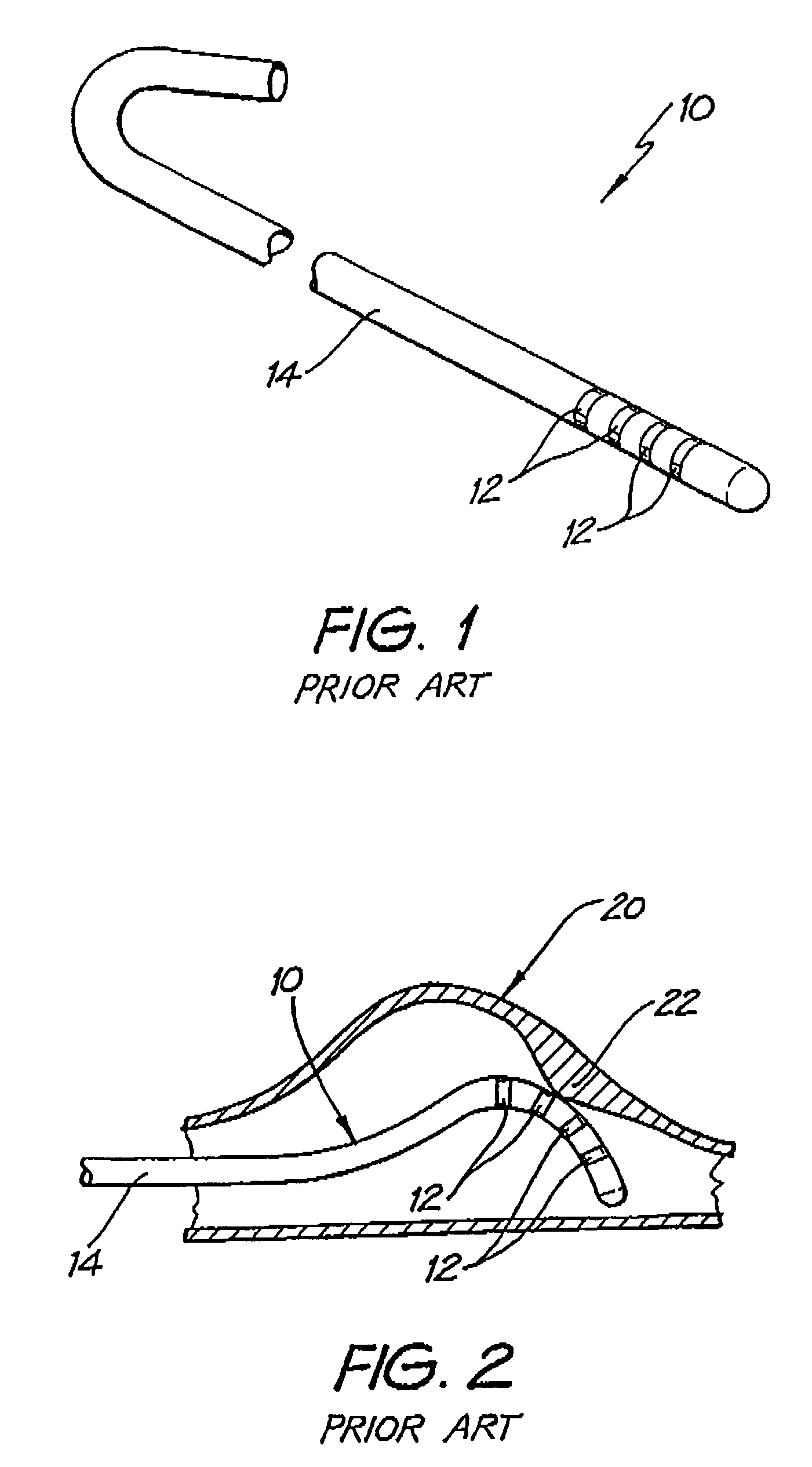Intraoperative endocardial and epicardial ablation probe
an endocardial and epicardial technology, applied in the field of endocardial and epicardial ablation probes, can solve the problems of requiring further ablation, difficult to accurately position and maintain the positioning of the electrode relative to a portion of myocardial tissue, and ablation or destruction of healthy tissu
- Summary
- Abstract
- Description
- Claims
- Application Information
AI Technical Summary
Benefits of technology
Problems solved by technology
Method used
Image
Examples
first embodiment
USE OF THE FIRST EMBODIMENT
[0069]FIGS. 7A to 7D illustrate an exemplary use of the malleable ablation probe 38, 40 to produce linear lesions. To septate an interior surface of the right atrium 96, a small cut 94 is made into the myocardial tissue. A surgeon then illuminates the aperture using a light 92 and observes the interior surfaces of the chamber. Having observed the surface to be ablated, the surgeon shapes, bends or otherwise deforms the RF ablation probe 38, 40 so that the malleable tip containing the electrodes 40 conforms with the surface to be ablated. The surgeon can test fit the tip and remove it for minor shape adjustments until a satisfactorily complementary fit is achieved between the tip electrodes and the tissue surface.
[0070]FIG. 7B illustrates a reverse “S” shape formed by the RF ablation probe 38, which is inserted via the aperture 94 into the atrium 96. The upper surface of the probe 38 containing the electrodes 40 is bent to conform with the contoured inner s...
second embodiment
[0072]FIGS. 8 to 10 illustrate side elevation, top plan and cross-sectional front elevation views of an RF ablation probe according to the second embodiment of the invention. The RF ablation probe 60 comprises a hollow, substantially tubular body 58 made of teflon plastic, a number of flat, conductive electrodes 50, and a malleable core 54 (not shown in FIGS. 8 and 9) contained within the centre of the thermally and electrically insulative body 58. In particular, the teflon body 58 has a relatively rigid yet bendable structure and is capable of being permanently formed to have a particular shape. As indicated in FIG. 8, the upper surface of the distal end of the tubular body 58 is crimped to produce a flat surface. The electrodes 50 are arranged on the flat upper surface, and again are separated by thermally and electrically insulative material.
[0073]The electrodes 50 have a like construction to those described hereinbefore with reference to the first embodiment. The flat upper surf...
third embodiment
[0077]FIGS. 11 to 13 illustrate an RF ablation probe 70 according to a third embodiment of the invention. Again, a number of flat electrodes 80 are arranged at predetermined spaces on a top surface of an elongate probe body 82. The body of 82 of the probe is tubular and preferably made of a rubber or soft plastic materials, such as SILASTIC, which is thermally and electrically insulative. Electrical conductors or leads connected to each electrode 80 are not shown in FIGS. 11 to 12 to simplify the diagram.
[0078]In this embodiment, rather than having an internal malleable core, a rigid, pre-formed or shaped insert member 84 is inserted into the internal cavity of the tubular body 82 at its distal end to thereby give the probe 70 a corresponding pre-formed shape. The insert member 84 in this example has an S-shape. In FIGS. 11 and 13, the pre-formed, rigid, cylindrical insert member 84 is preferably made of stainless steel or a rigid plastic body and can be inserted into the interior c...
PUM
 Login to View More
Login to View More Abstract
Description
Claims
Application Information
 Login to View More
Login to View More - R&D
- Intellectual Property
- Life Sciences
- Materials
- Tech Scout
- Unparalleled Data Quality
- Higher Quality Content
- 60% Fewer Hallucinations
Browse by: Latest US Patents, China's latest patents, Technical Efficacy Thesaurus, Application Domain, Technology Topic, Popular Technical Reports.
© 2025 PatSnap. All rights reserved.Legal|Privacy policy|Modern Slavery Act Transparency Statement|Sitemap|About US| Contact US: help@patsnap.com



